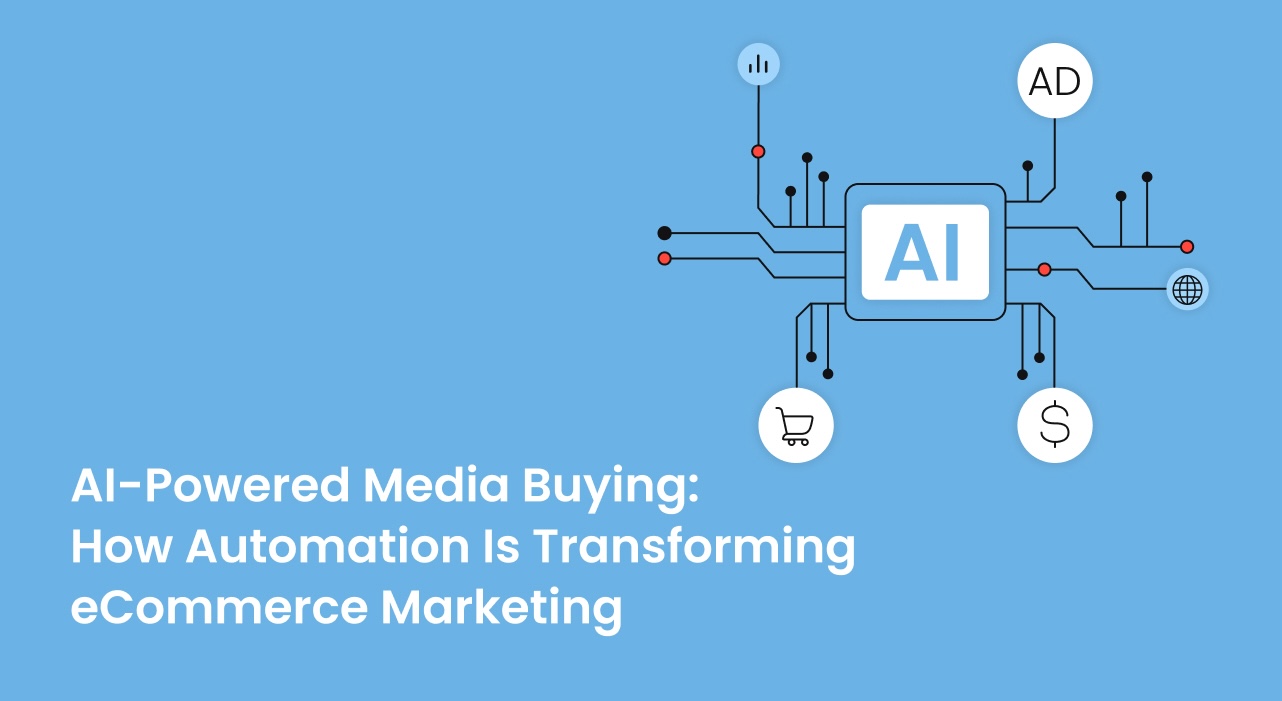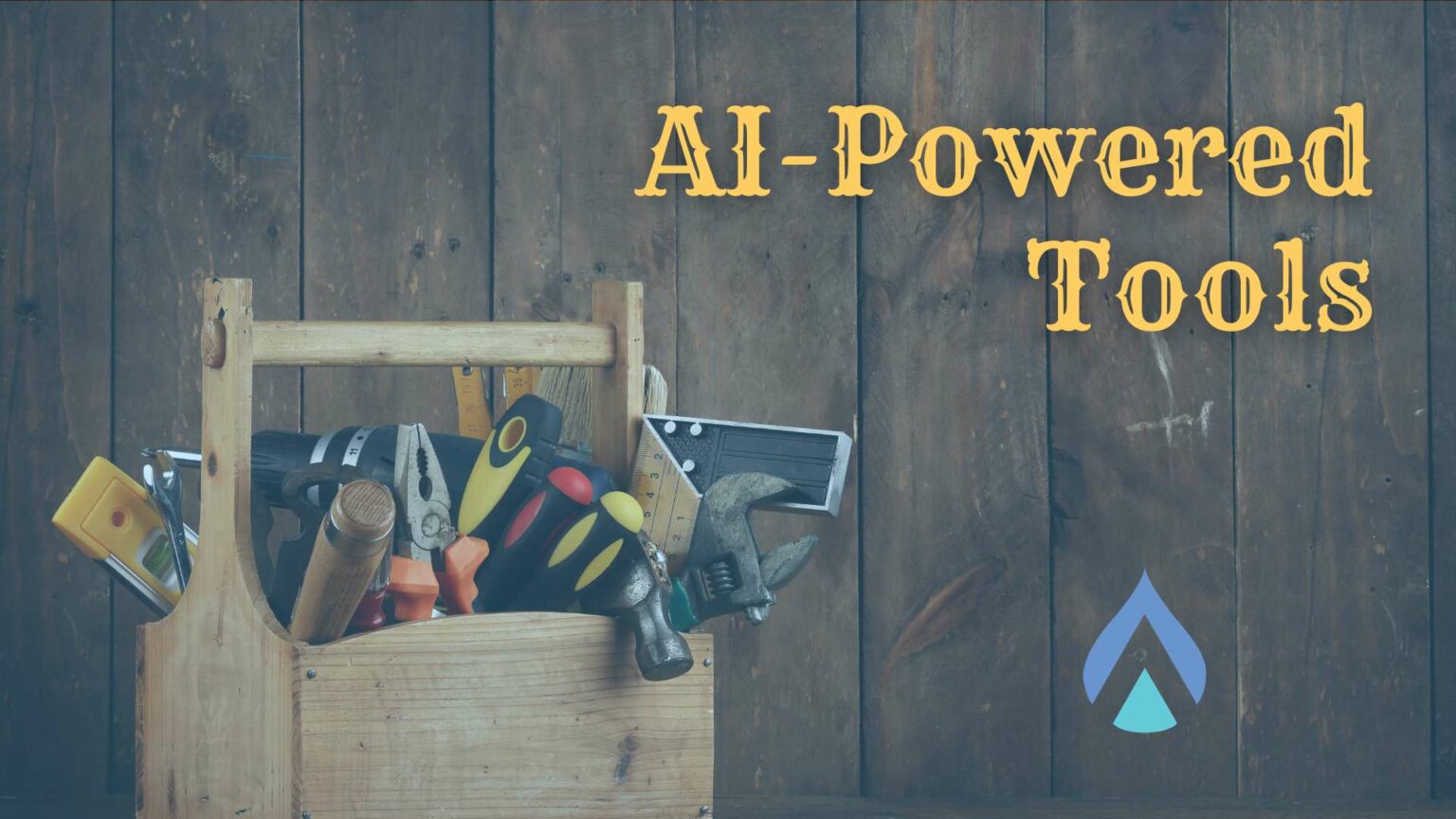
AI-Powered Media Buying: How Automation Is Transforming ECommerce Marketing


Running eCommerce campaigns across multiple platforms is complex. You're constantly monitoring performance, adjusting bids, and trying to understand which ads actually drive sales. It's a never-ending cycle that can feel overwhelming.
But what if AI could handle the heavy lifting? What if technology could analyze your campaigns and make decisions to optimize them in real-time?
That's precisely what AI-powered media buying automation offers eCommerce marketers today. From automated bidding to audience targeting and budget allocation, artificial intelligence transforms how online stores advertise their products.
In this article, we'll explore how AI automation is changing the media buying landscape for eCommerce businesses and how you can leverage these tools to boost your marketing performance.
What Is AI-Powered Media Buying?
AI-powered media buying is the use of artificial intelligence technologies to automate and optimize the process of purchasing advertising space across digital channels.
Unlike traditional media buying, which relies heavily on manual decisions and basic rules, AI systems can analyze massive amounts of data, identify patterns, and make real-time adjustments to maximize performance.
For eCommerce marketers, this means technology can handle tasks like:
- Setting optimal bid amounts based on the likelihood of conversion
- Determining the best audience segments to target
- Allocating budget across multiple platforms and campaigns
- Selecting the most effective ad creatives
- Adjusting strategies in real-time based on performance
The evolution from manual to automated media buying has been dramatic. What once took teams of people days or weeks to analyze and adjust can now happen automatically in seconds.
This shift is particularly valuable for eCommerce businesses that need to manage large product catalogs, multiple campaigns, and rapidly changing market conditions.
The Current State of AI in ECommerce Media Buying
The adoption of AI in eCommerce advertising continues to accelerate. According to recent surveys, over 60% of eCommerce marketers now use some form of AI or automation in their advertising strategies.
The most mature AI technologies in the space include:
- Automated bidding systems that adjust bids based on conversion probability
- Predictive analytics that forecast campaign performance
- Natural language processing to analyze customer feedback and reviews
- Computer vision for product categorization and creative optimization
RedTrack.io conversion tracker is at the forefront of this revolution, using AI to attribute conversions and revenue more accurately across marketing channels.
The platform helps eCommerce marketers understand which touchpoints truly influence purchases, rather than just tracking the last click before conversion.
The technology is particularly valuable in a world where customer journeys are increasingly complex. Shoppers might discover a product on Instagram, research it on Google, receive a retargeting ad on Facebook, and finally convert after clicking an email – all on different devices.
AI attribution models can connect these dots to show the real impact of each marketing channel.
Key Benefits of AI-Powered Media Buying for ECommerce
Implementing AI in your media buying process delivers several significant advantages for ecommerce businesses:
1. Enhanced Targeting Precision
AI algorithms analyze customer behavior at a granular level to identify high-value prospects. These systems can process thousands of data points – from past purchases to browsing behavior – to target users most likely to convert. This precision reduces wasted ad spend on uninterested audiences.
2. Dynamic Budget Allocation
AI can automatically shift budgets toward top-performing channels, campaigns, or products. If your Instagram ads are driving higher ROAS than your Google campaigns today, AI can reallocate funds in real-time to maximize results.
3. Real-Time Optimization
Manual optimization might happen daily or weekly. AI optimization happens continuously. Systems can detect performance changes within minutes and make immediate adjustments to bids, targeting, and creative elements.
4. Predictive Analytics & Forecasting
Advanced AI systems don't just react to data – they predict future performance. This forecasting ability helps eCommerce marketers plan inventory, budget allocation, and promotional strategies more effectively.
5. Improved ROAS
The combination of better targeting, optimized bidding, and dynamic budget allocation typically results in significant improvements in ROAS. Many eCommerce brands report 20-30% higher returns after implementing AI-driven media buying.
AI Automation Capabilities Transforming Media Buying
Let's look at the specific ways AI is automating and enhancing the media buying process for eCommerce marketers:
Automated Bidding Strategies
AI-powered bidding goes far beyond simple rules. These systems analyze historical performance data, competitive landscapes, and user behavior to set the optimal bid for each auction. They can adjust bids based on factors like:
- User demographics and behavior patterns
- Time of day and day of week
- Device type and location
- Previous interactions with your brand
- Probability of conversion based on similar users
AI-Driven Audience Segmentation
Finding the right customers is crucial for eCommerce success. AI audience segmentation tools identify valuable customer segments you might never discover manually.
These systems can create look-alike audiences based on your best customers, predict which users are most likely to make high-value purchases, and even identify users who might be ready to switch from a competitor's product.
Dynamic Creative Optimization
AI doesn't just decide who sees your ads – it can determine what they see. Dynamic creative optimization tools automatically:
- Test multiple creative variations
- Personalize ad content based on user data
- Adapt messaging to match user intent
- Display the most relevant products from your catalog
Cross-Channel Campaign Management
Managing campaigns across Google, Facebook, Instagram, TikTok, and other platforms is challenging. AI automation tools provide unified management across channels.
RedTrack's AI assistant excels in this area, analyzing data across multiple platforms to identify opportunities and generate actionable insights. Rather than just showing you the data, it interprets what's happening and recommends specific actions to improve performance.
Implementing AI Media Buying in Your ECommerce Strategy
Ready to incorporate AI into your media buying? Here's how to approach implementation:
Assess Your Automation Readiness
Before diving in, evaluate your current setup:
- Do you have sufficient historical data for AI to learn from?
- Are your conversion tracking and attribution systems accurate?
- Do you have clear KPIs to measure success?
- Does your team have the skills to oversee AI systems?
Steps to Transition From Manual to Automated Media Buying
- Start with a single channel or campaign to test and learn
- Establish baseline metrics to measure improvement
- Choose the right AI tools for your specific goals
- Set clear parameters and rules for your AI systems
- Gradually expand automation across more channels and campaigns
Data Integration & Quality Considerations
AI is only as good as the data it works with. Prioritize:
- Accurate conversion tracking across all platforms
- De-duplicated customer data
- Regular data audits to catch issues
- Integration between advertising, analytics, and eCommerce platforms
Skills Needed for the AI-Powered Marketing Team
Your team will need to evolve from manual operators to strategic overseers. Important skills include:
- Data interpretation and analysis
- Strategic campaign planning
- Understanding of AI capabilities and limitations
- Ability to translate business goals into AI parameters
Common Challenges and How to Overcome Them
Implementing AI media buying isn't without obstacles. Here are common challenges and solutions:
Data Quality & Integration Issues
Poor data leads to poor AI decisions. Combat this by:
- Implementing server-side tracking to improve data accuracy
- Creating a single source of truth for customer data
- Regularly validating conversion tracking
- Using tools that can work with imperfect data
Balancing Automation with Human Oversight
AI shouldn't replace human judgment completely. Maintain balance by:
- Setting clear boundaries for AI decision-making
- Regularly reviewing AI recommendations
- Developing guardrails to prevent runaway spending
- Keeping humans in charge of creative and strategic decisions
Privacy Concerns & Regulatory Compliance
As privacy regulations evolve, compliance becomes more complex. Stay ahead by:
- Prioritizing first-party data collection
- Implementing consent management tools
- Working with platforms that offer privacy-friendly targeting
- Staying updated on regulatory changes
Tracking & Attribution Complexities
Multi-touch attribution is challenging, especially across devices. Address this by:
- Using advanced attribution models that consider all touchpoints
- Implementing cross-device tracking where possible
- Testing different attribution windows
- Accepting that perfect attribution may not be possible
Future Trends in AI-Powered Media Buying
The AI media buying landscape continues to evolve rapidly. Here are key trends to watch:
Advanced Predictive Capabilities
Next-generation AI will move beyond optimization to accurate prediction of:
- Customer lifetime value before the first purchase
- Optimal timing for reaching each customer
- Which products customers might want before they know themselves
- The exact budget needed to achieve specific business outcomes
Multi-Channel Optimization
Future systems will optimize not just within channels but across the entire marketing ecosystem, creating truly integrated strategies that maximize overall business results rather than channel-specific metrics.
Voice & Visual Search Integration
As shopping through voice assistants and image search grows, AI media buying will adapt to these new discovery methods with specialized targeting and bidding strategies.
Personalization at Scale
The ultimate promise of AI is true one-to-one marketing – showing each prospect exactly the right product, with the right message, at the right time, at the right price.
Delivering Better Results with Less Manual Effort
AI-powered media buying represents a significant leap forward for ecommerce marketers. By automating complex tasks, analyzing vast amounts of data, and making real-time optimizations, these systems deliver better results with less manual effort.
While implementing AI requires investment in tools, data infrastructure, and skills development, the potential returns make it well worth considering. Businesses that successfully leverage AI for media buying typically experience improved return on ad spend (ROAS), more efficient operations, and enhanced customer experiences.
As you consider incorporating AI into your media buying strategy, start small, focus on data quality, and maintain the right balance between automation and human oversight. Consider solutions like RedTrack.io to amplify your data insights with AI agents that take actions based on data analysis.





